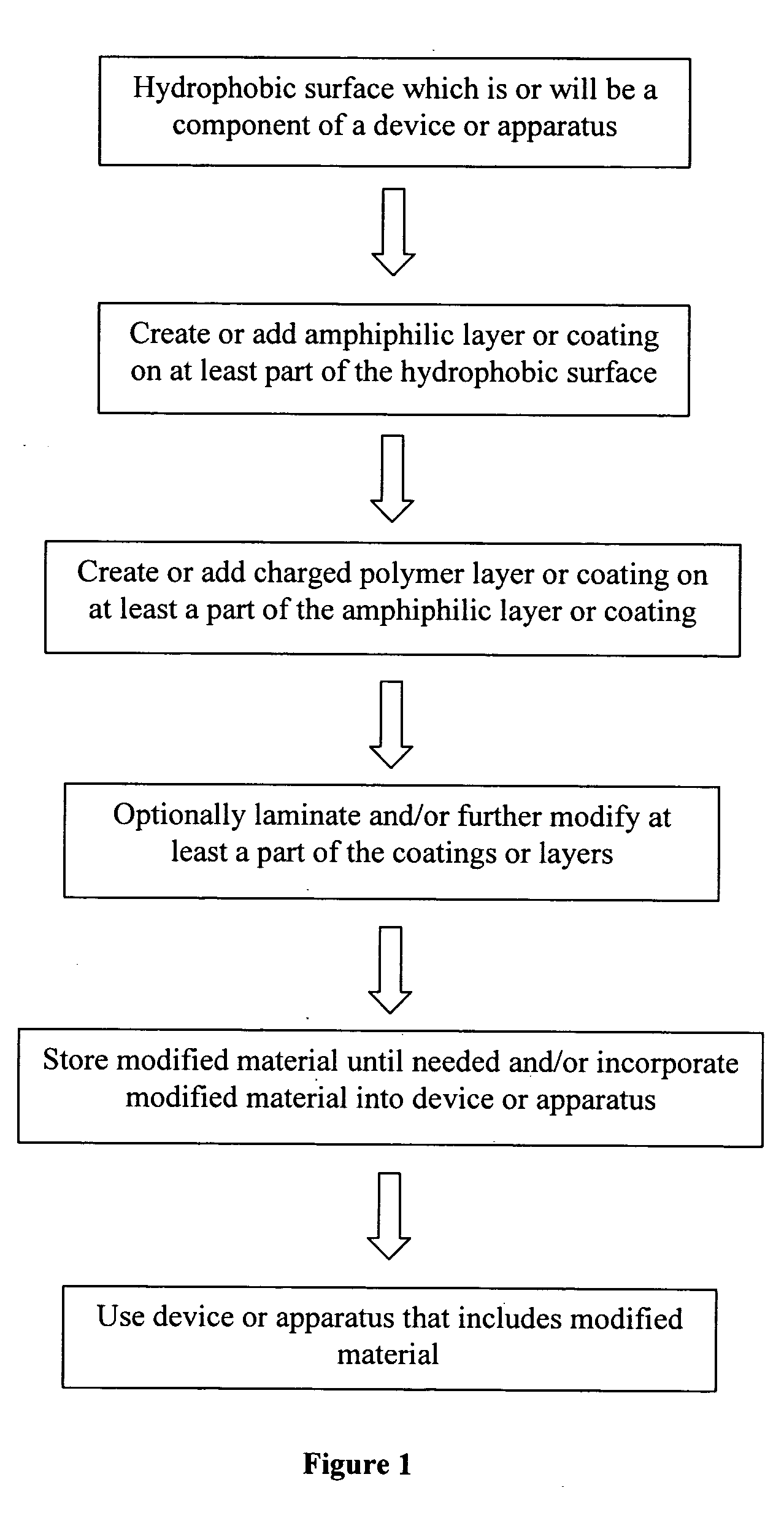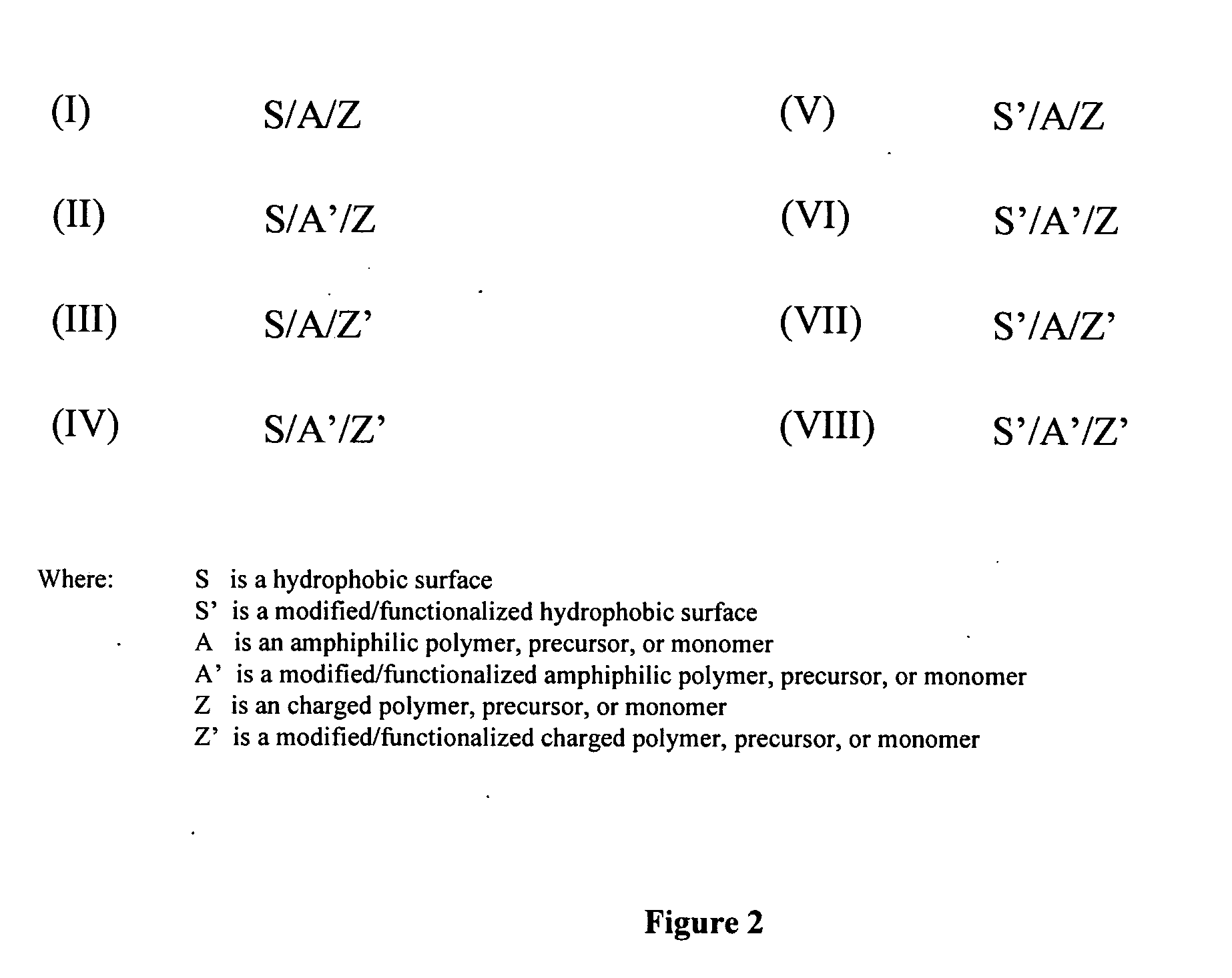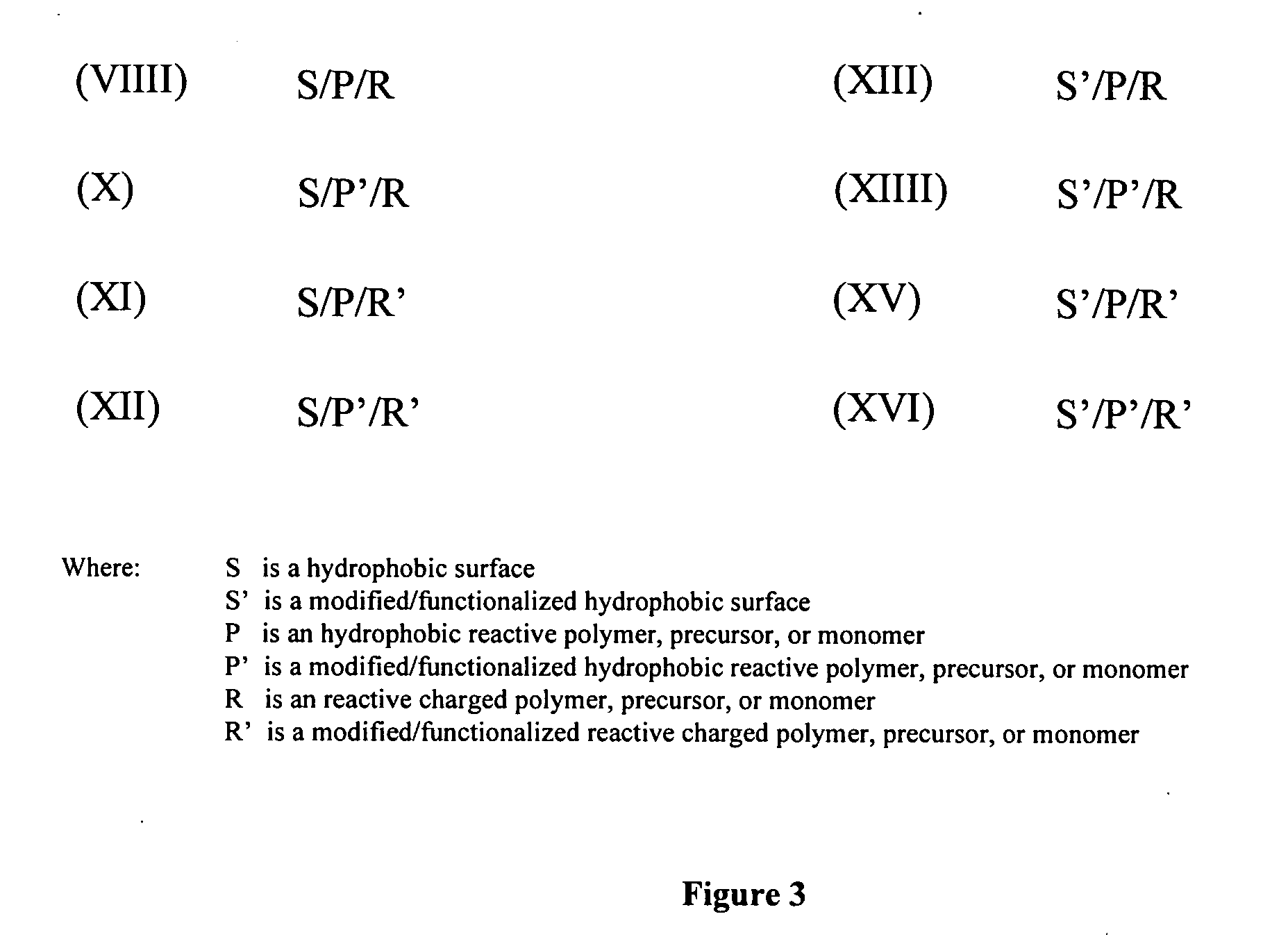Methods, compositions and devices, including microfluidic devices, comprising coated hydrophobic surfaces
- Summary
- Abstract
- Description
- Claims
- Application Information
AI Technical Summary
Benefits of technology
Problems solved by technology
Method used
Image
Examples
example 1
Preparation of PSMA-PDADMAC Coating
[0159] Materials and solvents were analytical grade or better and were purchased from commercial vendors unless otherwise noted. 1,14-tetradecanediol dimethacrylate, 1,8-diazabicyclo[5.4.0]undec-7-ene (DBU), glycidol, TEMED, [3-(methacryloylamino)propyl]trimethylammonium chloride solution (MAPTAC), poly(diallyldimethylammonium chloride, poly(styrene-alt-maleic anhydride) (PSMAA), poly(styrene-co-maleic anhydride), 2,3-dihydrofuran, 2-aminoethyl methacrylate hydrochloride, poly(ethylene glycol) methyl ether methacrylate, 4-aminobenzophenone, octanohydrazide (fix in FIG. 7B), (2-aminoethyl)trimethylammonium chloride hydrochloride, 3-amino-1-propanesulfonic acid, 8-aminooctanoic acid, 1-octanamine, N,N-dimethylethylenediamine, N,N′-dimethylethylenediamine, 3-chloro-1,2-propanediol, (hydroxypropyl)methyl cellulose, branched polyethyleneimine (PEI), 4-acryloylmorpholine and ammonium persulfate as well as all peptides and proteins were purchased from Si...
example 1a
Synthesis of poly(styrene-alt-maleic acid) (SMA) from poly(styrene-alt-maleic anhydride) (SMAA).
[0162]
1 PDADMAC is available from Aldrich as a 20% w / v solution in water in low, medium or high molecular weights (100,000-200,000; 200,000-350,000; and 400,000-500,000, respectively).
[0163] A 10% w / v solution of poly(styrene-alt-maleic anhydride) (PSMAA, MW 350,000) was prepared by dissolving 2.0 g of PSMAA in 20 mL of acetone. To this solution, 1 mL of water was added with vigorous mixing and the resulting solution stirred overnight. The partially hydrolyzed PSMAA acetone solution was added dropwise to a rapidly stirred aqueous solution of sodium hydroxide at 80-90° C. (0.1 M, 180 mL). The solution was cooled and the pH was adjusted to ˜6 using hydrochloric acid (6.0 M). Water was added to give a total volume of 200 mL resulting in a 1% w / v solution of PSMA. A commercial PSMA polymer is also available.
example 1b
Preparation of a Bilayer Coating of PSMA-PDADMAC:
[0164]
[0165] A Harvard 22 syringe pump was used to serially flow fluids through the microfluidic chip while vacuum was used to simultaneously remove the excess fluid from tip of the chip thereby preventing cross contamination of the sheath flow channel, as shown below.
[0166] UpChurch Scientific ¼-20 flat bottom fittings were used in conjunction with a custom polycarbonate chip-mount that uses an o-ring pressure seal to connect to the microfluidic chip. Water was continuously flowed through the sheath flow channel (through well 4 at a rate of 20-30 μl / min) throughout all steps of the coating procedure. The main channel of the microfluidic chip was first washed with a 40% aqueous methanol solution followed by drying with vacuum at the tip. A 1% aqueous solution of PMSA was then pumped through the main channel (through wells 1, 2 and 3 at a rate of 15-75 μl / min) for 3 minutes and then the fluidic top was removed and the microfluidic c...
PUM
| Property | Measurement | Unit |
|---|---|---|
| Mass | aaaaa | aaaaa |
| Length | aaaaa | aaaaa |
| Amphiphilic | aaaaa | aaaaa |
Abstract
Description
Claims
Application Information
 Login to View More
Login to View More - R&D
- Intellectual Property
- Life Sciences
- Materials
- Tech Scout
- Unparalleled Data Quality
- Higher Quality Content
- 60% Fewer Hallucinations
Browse by: Latest US Patents, China's latest patents, Technical Efficacy Thesaurus, Application Domain, Technology Topic, Popular Technical Reports.
© 2025 PatSnap. All rights reserved.Legal|Privacy policy|Modern Slavery Act Transparency Statement|Sitemap|About US| Contact US: help@patsnap.com



